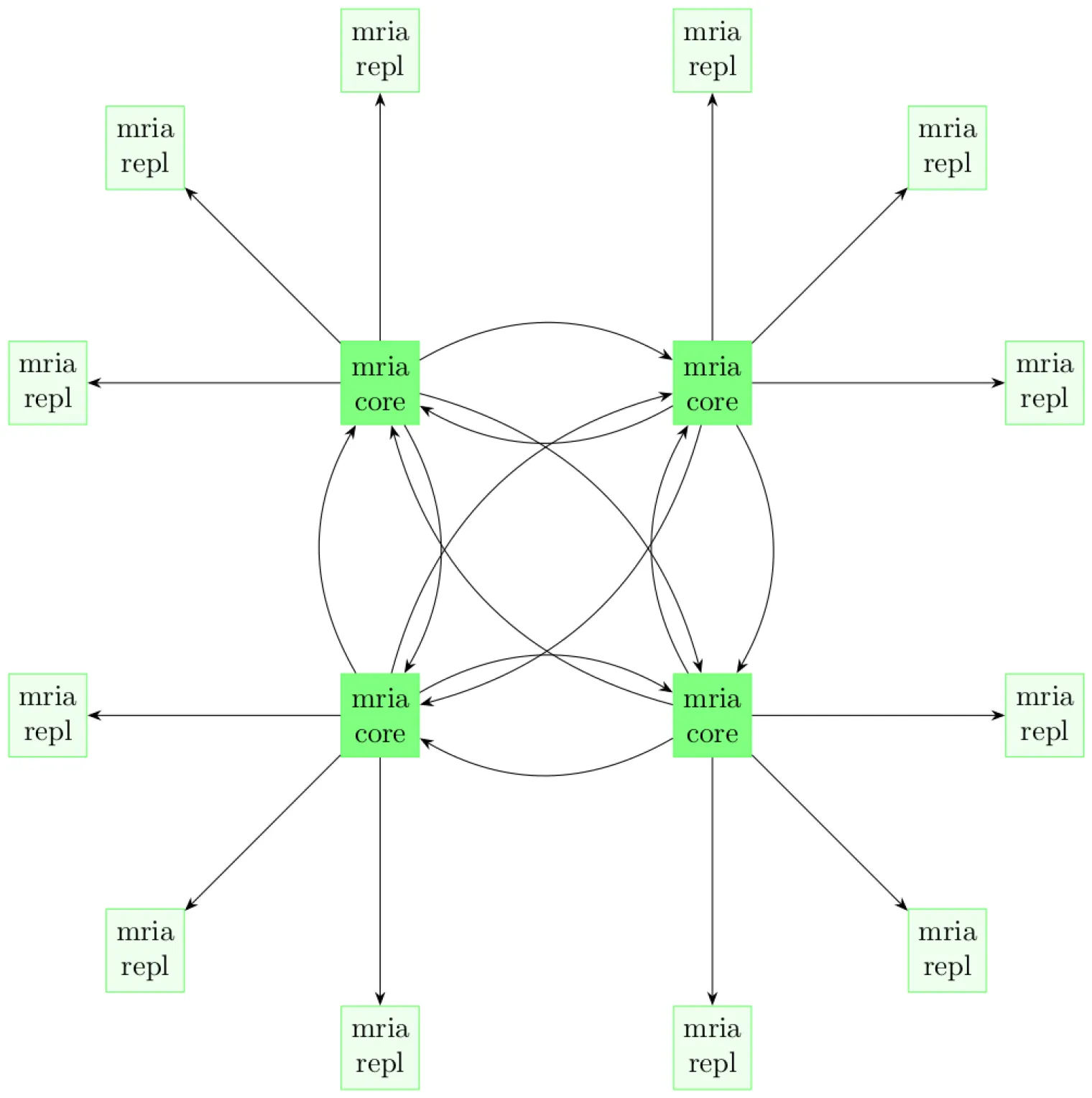Enable Core + Replicant Cluster (EMQX 5.x)
Task Target
- Configure EMQX cluster Core node through
coreTemplatefield. - Configure EMQX cluster Replicant node through
replicantTemplatefield.
Core Nodes And Replicant Nodes
TIP
Just EMQX Enterprise Edition supports Core + Replicant cluster.
In EMQX 5.0, the nodes in the EMQX cluster can be divided into two roles: core (Core) node and replication (Replicant) node. The Core node is responsible for all write operations in the cluster, which is consistent with the behavior of the nodes in the EMQX 4.x cluster, and serves as the real data source of the EMQX database Mria to store the routing table, Data such as sessions, configurations, alarms, and Dashboard user information. The Replicant node is designed to be stateless and does not participate in the writing of data. Adding or deleting Replicant nodes will not change the redundancy of the cluster data. For more information about the EMQX 5.0 architecture, please refer to the document: EMQX 5.0 Architecture, the topological structure of the Core node and the Replicant node is shown in the following figure:

TIP
There must be at least one Core node in the EMQX cluster. For the purpose of high availability, EMQX Operator recommends that the EMQX cluster have at least three Core nodes.
Configure EMQX Cluster
apps.emqx.io/v2beta1 EMQX supports configuring the Core node of the EMQX cluster through the .spec.coreTemplate field, and configuring the Replicant node of the EMQX cluster using the .spec.replicantTemplate field. For more information, please refer to: API Reference.
Save the following content as a YAML file and deploy it with the
kubectl applycommandyamlapiVersion: apps.emqx.io/v2beta1 kind: EMQX metadata: name: emqx spec: image: emqx:5 coreTemplate: spec: replicas: 2 resources: requests: cpu: 250m memory: 512Mi replicantTemplate: spec: replicas: 3 resources: requests: cpu: 250m memory: 1Gi dashboardServiceTemplate: spec: type: LoadBalancerIn the YAML above, we declared that this is an EMQX cluster consisting of two Core nodes and three Replicant nodes. Core nodes require a minimum of 512Mi of memory, and Replicant nodes require a minimum of 1Gi of memory. You can adjust according to the actual business load. In actual business, the Replicant node will accept all client requests, so the resources required by the Replicant node will be higher.
Wait for the EMQX cluster to be ready, you can check the status of EMQX cluster through
kubectl getcommand, please make sureSTATUSisRunning, this may take some timebash$ kubectl get emqx emqx NAME IMAGE STATUS AGE emqx emqx:5.1 Running 10mObtain the Dashboard External IP of EMQX cluster and access EMQX console
EMQX Operator will create two EMQX Service resources, one is emqx-dashboard and the other is emqx-listeners, corresponding to EMQX console and EMQX listening port respectively.
bash$ kubectl get svc emqx-dashboard -o json | jq '.status.loadBalancer.ingress[0].ip' 192.168.1.200Access
http://192.168.1.200:18083through a browser, and use the default username and passwordadmin/publicto login EMQX console.
Verify EMQX Cluster
Information about all the nodes in the cluster can be obtained by checking the .status of the EMQX custom resources.
$ kubectl get emqx emqx -o json | jq .status.coreNodes
[
{
"node": "emqx@emqx-core-0.emqx-headless.default.svc.cluster.local",
"node_status": "running",
"otp_release": "24.3.4.2-2/12.3.2.2",
"role": "core",
"version": "5.0.20"
},
{
"node": "emqx@emqx-core-1.emqx-headless.default.svc.cluster.local",
"node_status": "running",
"otp_release": "24.3.4.2-2/12.3.2.2",
"role": "core",
"version": "5.0.20"
},
{
"node": "emqx@emqx-core-2.emqx-headless.default.svc.cluster.local",
"node_status": "running",
"otp_release": "24.3.4.2-2/12.3.2.2",
"role": "core",
"version": "5.0.20"
}
]$ kubectl get emqx emqx -o json | jq .status.replicantNodes
[
{
"node": "emqx@10.244.4.56",
"node_status": "running",
"otp_release": "24.3.4.2-2/12.3.2.2",
"role": "replicant",
"version": "5.0.20"
},
{
"node": "emqx@10.244.4.57",
"node_status": "running",
"otp_release": "24.3.4.2-2/12.3.2.2",
"role": "replicant",
"version": "5.0.20"
},
{
"node": "emqx@10.244.4.58",
"node_status": "running",
"otp_release": "24.3.4.2-2/12.3.2.2",
"role": "replicant",
"version": "5.0.20"
}
]